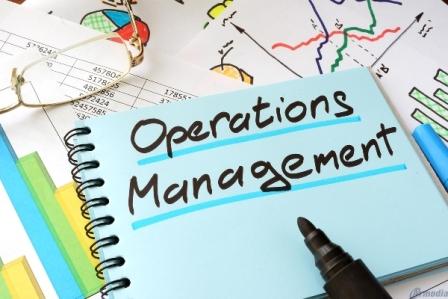Managers are the unsung heroes behind the scenes, orchestrating an organization’s daily operations symphony. Their dynamic and multifaceted role encompasses interpersonal, informational, and decision-making responsibilities. In this article, we’ll delve into the intricacies of a manager’s world, highlighting ten crucial responsibilities that define their impact on a functional organization.
Key Managerial Responsibilities
Managerial responsibilities encompass roles that span the entire organizational landscape, embracing a holistic approach rather than being confined to specific tasks. These roles include:
Interpersonal Role
Managers as Leaders, Liaisons, and Figureheads
In pursuing organizational goals, managers engage with internal and external stakeholders. The interpersonal role involves managing relationships, encompassing leadership, liaison, and figurehead responsibilities. Leadership roles foster relationships with employees, while liaison roles involve building strategic connections within and outside the organization. Figurehead roles encompass the manager’s multifaceted functions to sustain these strategic relationships.
Informational Roles
A manager’s informational duties revolve around handling the organisation’s information flow. This entails gathering information about the company’s affairs from internal mechanisms and disseminating it to relevant stakeholders. It also involves maintaining order in the information flow. In fulfilling this role, managers monitor various departments, receive updates from department heads, and decide on information dissemination to the management team, employees, and external stakeholders.
Decision-making Role
Managers wield decision-making authority within their respective domains. This role extends to managing risks, addressing internal and external threats, overseeing resource management, and handling negotiations with external entities. Managers oversee company policy on these matters regardless of the specific tasks involved. In executing their decision-making role, managers actively seek opportunities to optimize strategies and capitalize on potential avenues.
Who is a Manager?
A manager is the backbone of an organization, directing and supervising procedures with seasoned expertise. Managers exist at various levels, from CEOs to department heads, each contributing to the organization’s overall functionality.
Types of Managers
Explore the diverse landscape of managers, from the overarching role of general managers to the focused responsibilities of functional and frontline managers. Each type plays a vital part in steering the organizational ship.
Ten Examples of Managerial Duties
Managerial responsibilities entail specific tasks, including:
Representative Duties
Beyond the Boardroom: Managers as Spokespersons
Managers transcend their leadership roles by representing the organization. Whether addressing the press, entertaining guests, or attending events, they serve as the face of the company, embodying its values and vision.
Directing and Supervising Staff
Guiding the Workforce Symphony
At the core of a manager’s responsibilities lies directing and supervising staff. From CEOs overseeing executives to project managers guiding teams, managers formulate strategies, assign roles, and ensure the successful completion of projects.
Strategic Partnerships
Building Bridges for Organizational Growth
Managers don the hat of partnership architects, identifying and securing strategic collaborations. Research, meetings, and negotiations pave the way for alliances that bring in resources, market share, and valuable information.
Organizational Structure
Managers collaborate with their executive team to design the organisation’s internal structure. This includes creating supervisory positions, defining responsibilities, and making structural decisions that impact task allocation, supervision, and collaboration.
Setting Organizational Goals
Managers are architects of a company’s goals. They define both short-term tasks and long-term visions, considering internal and external factors. This includes setting objectives, timelines, and key performance indicators that guide the organization’s journey.
Monitoring Company Progress
A manager’s role involves constant vigilance over all aspects of the organization. They gather information, conduct meetings, and ensure a well-functioning internal structure. By monitoring progress, managers strengthen the bond between leadership and employees.
Disseminating Information to Stakeholders
Connecting with the Pillars of Support
Stakeholders, be they investors or directors, rely on managers for updates. Regular meetings and reports become the bridge through which managers communicate the organization’s current situation, ensuring stakeholders are well-informed and engaged.
Identifying Growth Opportunities
Seizing the Winds of Change
In a rapidly evolving landscape, managers act as scouts, identifying economic, technological, and social trends. Through networks, research, and creativity, they spot opportunities that align with the organization’s goals, fostering growth and innovation.
Allocating and Managing Resources
Balancing Act of Efficiency
While financial executives handle the numbers, managers make the final decisions on resource allocation. Prioritizing tasks and optimizing efficiency ensures the organization makes the most of its resources, contributing to its overall success.
Managing Disputes
As organizational helmsmen, managers steer through internal conflicts. Whether within the management team or among employees, conflict resolution is a crucial aspect. Additionally, managers represent the company in external disputes, safeguarding its interests.
Conclusion
These managerial responsibilities underscore the multifaceted and critical role managers play in steering the success of an organization. Keeping in line with the original content’s meaning, this rewritten version emphasizes the diverse and intricate nature of managerial duties within a dynamic organizational setting.
FAQs
Q1: How do managers contribute to organizational growth?
Managers identify growth opportunities, capitalize on trends, and design strategies that align with the organization’s goals, fostering innovation and development.
Q2: What is the significance of a well-defined organizational structure?
A well-defined structure affects task allocation, supervision, and collaboration within an organization, contributing to its overall growth and efficiency.
Q3: How do managers handle disputes within the company?
Managers navigate internal conflicts by facilitating compromise and, if necessary, restructuring. They represent the company’s interests and may engage in legal processes in external disputes.
Q4: What role do managers play in setting organizational goals?
Managers are architects of organizational goals, defining short-term tasks and long-term visions, guiding the company toward success.
Q5: Why is transparency crucial in a manager’s informational role?
Transparency fosters trust among stakeholders. Managers, as spokespersons, ensure clear communication, maintaining a positive organizational image.
